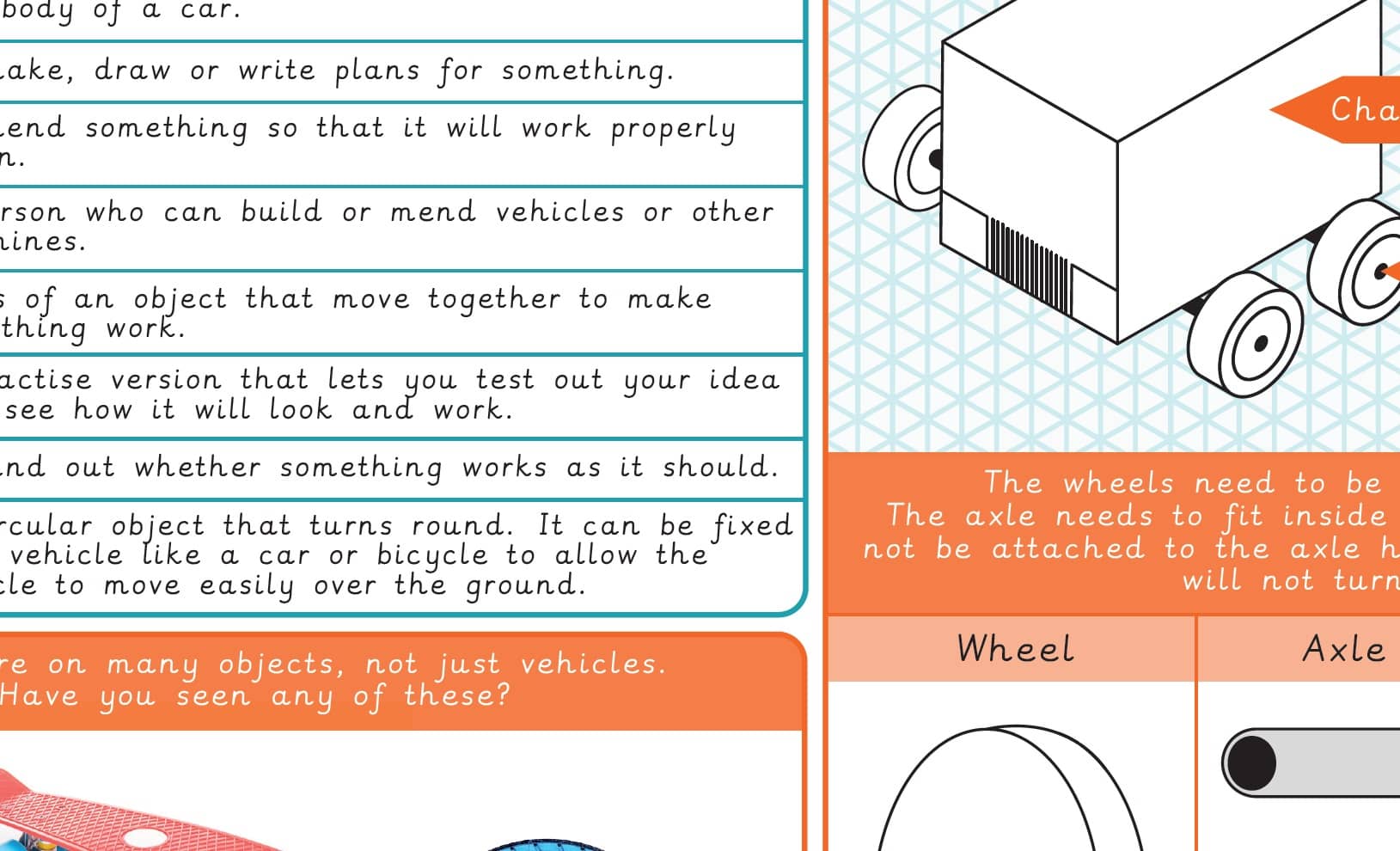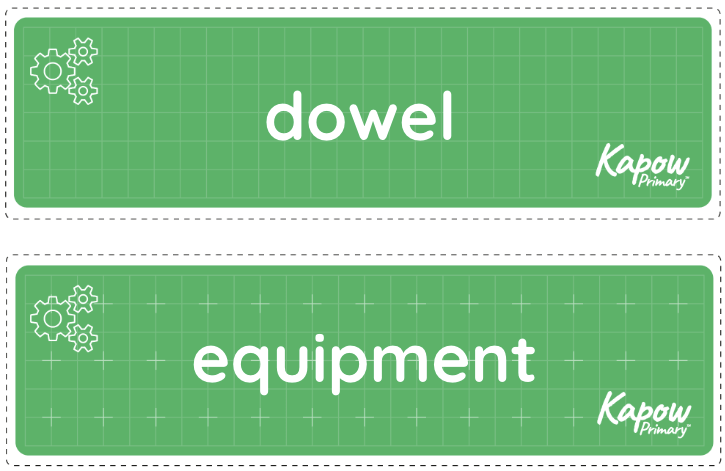Mechanisms: Wheels and axles
Learning about the key parts of a wheeled vehicle, the children develop an understanding of how wheels, axles and axle holders work while designing and making a moving vehicle.
We’re monitoring the upcoming 2025 National Curriculum updates and will revise our resources when we know more. Learn more
- Subjects >
- Design and technology >
- Key stage 1 >
- Year 1 >
- Mechanisms >
-
Mechanisms: Wheels and axles
Please note
This unit has been replaced by the unit *New* Mechanisms: Wheels and axles. It will move to our Content archive in December 2025. It will remain permanently available but will not be updated in line with curriculum or website developments.
Unit outcomes
Pupils who are secure will be able to:
- Explain that wheels move because they are attached to an axle.
- Recognise that wheels and axles are used in everyday life, not just in cars.
- Identify and explain vehicle design flaws using the correct vocabulary.
- Design a vehicle that includes functioning wheels, axles and axle holders.
- Make a moving vehicle with working wheels and axles.
- Explain what must be changed if there are any operational issues.
Suggested prior learning
Mechanisms: Making a moving storybook
Get startedLesson plans
Lesson 1: How do wheels move?
- To understand how wheels move.
Lesson 2: Fixing broken wheels
- To identify what stops wheels from turning.
Lesson 3: Designing a vehicle
- To design a moving vehicle.
Lesson 4: Wacky races
- To build a moving vehicle.
Key skills
Related content
Unit resources

Knowledge organiser – D&T Y1: Mechanisms: Wheels and axles
Aimed at pupils, a single page which gives key facts and definitions from the unit 'Wheels and axles'.

Vocabulary display – D&T Y1: Mechanisms: Wheels and axles
A display version of the vocabulary from the unit 'Wheels and axles'.
Cross-curricular opportunities
Mathematics
‘Pupils should be taught to:
- measure and begin to record […] lengths and heights’
See National curriculum - Mathematics key stages 1 to 2.
Pupils use their knowledge of mathematics by measuring components accurately to design and build a working vehicle with wheels and axles.
British values: Mutual respect.
Suggested next steps
Mechanisms: Fairground wheel
Pupils build on their knowledge of wheels and axles, from designing moving vehicles to create a stable, rotating fairground wheel.

